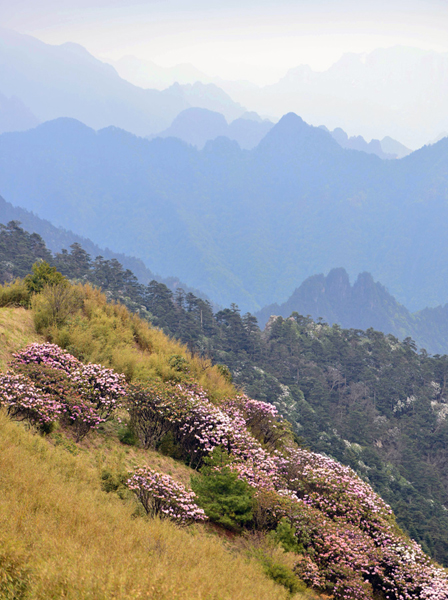Hubei Shennongjia


Category of Site: Natural site
Brief introduction
Located at the juncture of three counties - Badong, Xingshan and Fangxian - in Hubei province, the southwest of Shennongjia National Nature Reserve borders Xiangfan city, Yichang city and Wanxian county. Hubei Shnenongjia is well known for its pristine environment, diverse landscapes and wildlife. It not only has magnificent peaks that stand more than 3,000 meters above sea level, but it has grand and quiet valleys. The site features prominently in the history of botanical research and was the object of international plant collecting expeditions in the 19th and 20th centuries.
The reserve was established in 1982 with a total area of 70,467 hectares. The reserve encompasses three vertical vegetation zones namely subtropical, warm temperate and cold temperate. Hence, it is an ideal place for ecological research on biodiversity, typicality and natural transition of vegetation.
In 2016, Hubei Shennongjia was listed as a World Natural Heritage Site, the 50th World Heritage Site in China.
Natural heritage
Shennongjia is on the ecotone from the plains and foothill regions of eastern China to the mountainous region of central China. It is also situated along a zone of climate transition where the climate shifts from the subtropical zone to warm temperate zone, and where warm and cold air masses from north and south meet and are controlled by the Subtropical Gyre.
The Shennongjia region is considered to be one of three centers of endemic plant species in China, a reflection of its geographical transitional position which has shaped its biodiversity, ecosystems and biological evolution. Hubei Shennongjia exhibits globally impressive levels of species richness and endemism especially within its flora. There are 3,767 vascular plant species, including a remarkable 590 temperate plant genera. In addition, 205 plant species and two genera are endemic to the property, and 1,793 species endemic to China. Among the fauna, more than 600 vertebrate species have been recorded, including 92 mammals, 399 birds, 55 fish, 53 reptiles and 37 amphibian species. More than 4,300 insect species have been identified. The property includes numerous rare and endangered species such as the golden or Sichuan snub-nosed monkey, clouded leopard, common leopard, Asian golden cat, dhole, Asian black bear, Indian civet, musk deer, Chinese goral and Chinese serow, golden eagle, Reeve's pheasant and the world's largest amphibian, the Chinese giant salamander.
Shennongjia has been a place of significant scientific interest and its mountains have featured prominently in the history of botanical inquiry. The site has a special status for botany and has been the object of celebrated international plant collecting expeditions conducted in the 19th and 20th centuries. From 1884 to 1889, more than 500 new species were recorded from the area.





































